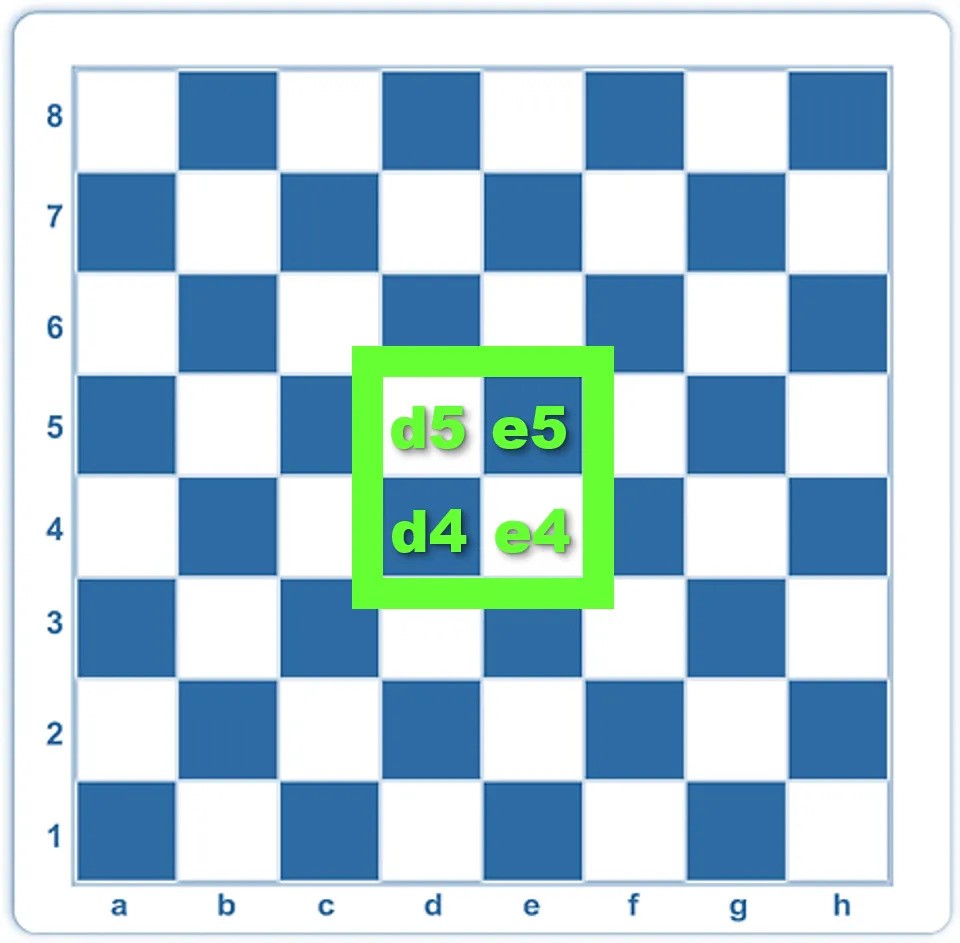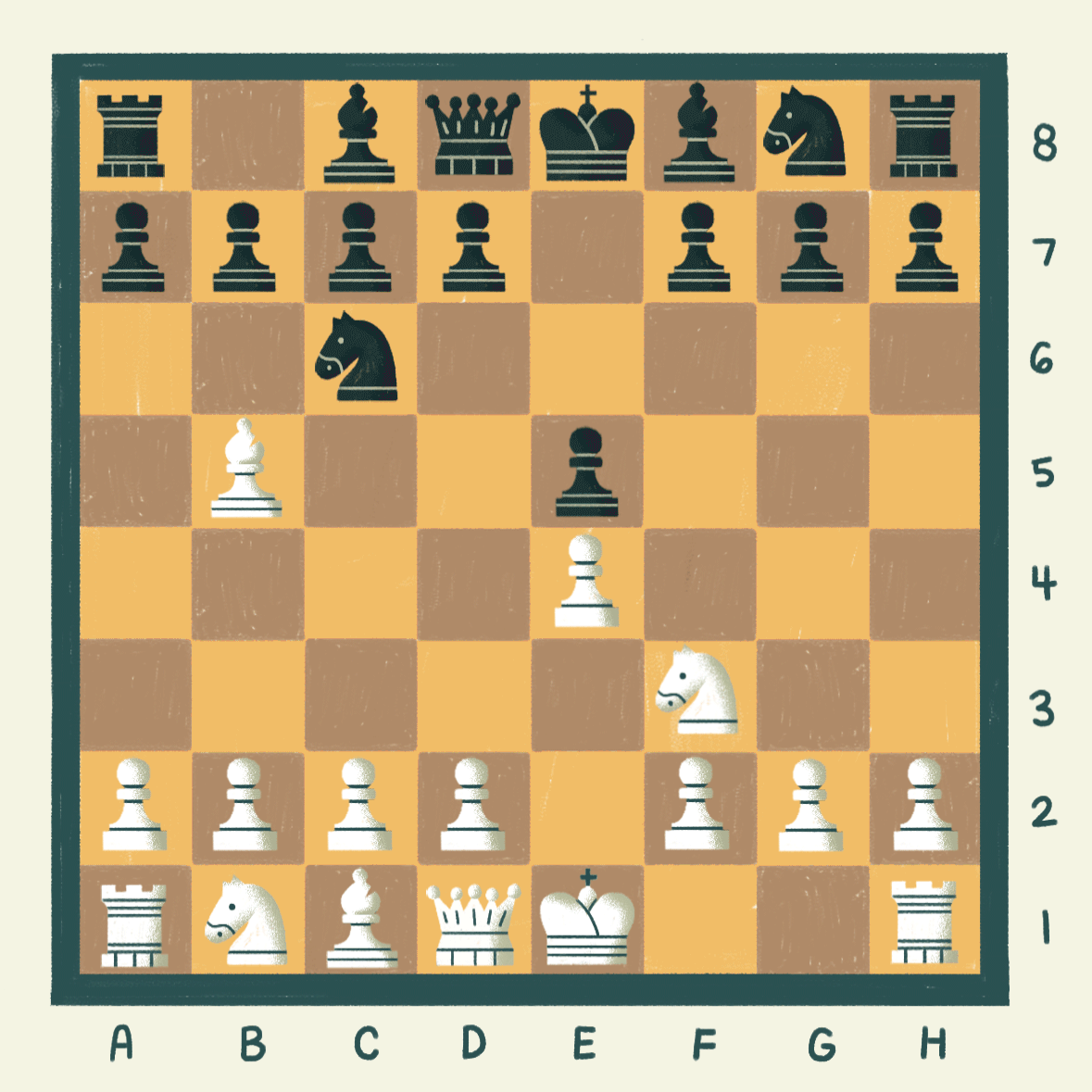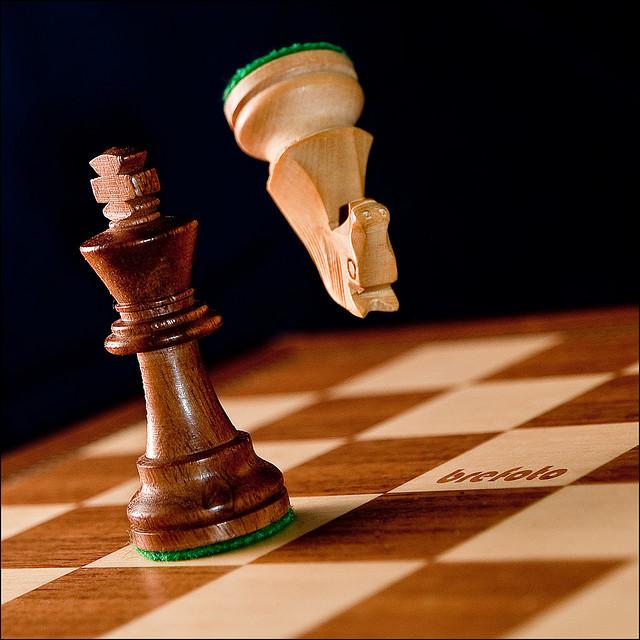The opening in chess is like the foundation of a house—it sets the stage for everything that follows. Whether you’re playing in a tournament or just enjoying a friendly game, knowing the right strategies for the opening can give you a significant advantage. In this article, we’ll explore some key strategies for mastering the opening and setting yourself up for success on the chess board. Plus, there’s a fun quiz at the end to test your opening knowledge!
1. Control the Center: The Key to a Strong Opening
One of the first things every chess player should learn is the importance of controlling the centre of the board. The central squares (d4, d5, e4, and e5) are critical because they give your pieces the most mobility. By placing your pawns and pieces in the centre early on, you’ll have better control over the board and create more opportunities for future moves.

Tip: Start with pawn moves like 1.e4 or 1.d4, as they allow your pieces to quickly develop and control the centre.
2. Develop Your Pieces Early
After establishing control of the centre, the next step is to develop your pieces—especially your knights and bishops. Developing means moving your pieces from their starting positions to more active squares. This will help you get ready for the middle game, where the real battle begins.
Tip: Try not to move the same piece multiple times in the opening, as it can waste time and leave you vulnerable to attacks. Focus on moving each piece once and placing them on squares where they control key areas of the board.
3. Protect Your King: Castle Early
Once you’ve developed a few pieces, it’s crucial to make your king safe. Castling early helps protect your king while also activating your rook. It’s one of the most effective moves to safeguard your most valuable piece and prepare for an attack.
Tip: Castle on the side where your pieces are already developed to avoid leaving your king exposed. Don’t delay castling for too long—your king needs safety early in the game.
4. Don’t Move Too Many Pawns
Pawns are important for controlling space, but moving too many pawns in the opening can weaken your position. Be sure to focus on developing your pieces first before pushing pawns too far forward. If you’re too aggressive with pawns early on, it can create weaknesses in your defence that your opponent can exploit.
Tip: Aim for a balance—don’t neglect your pieces while trying to move too many pawns. Overextending pawns can create weak squares that your opponent can target.
5. Know Common Opening Systems
Familiarising yourself with a few well-known opening systems can help you gain confidence in your games. Some classic openings, like the Ruy Lopez, Sicilian Defence, or Queen’s Gambit, are used by top players because they offer good chances for both development and control of the centre.

Tip: Study a couple of openings that suit your playstyle, whether you like attacking or prefer a more positional approach. Familiarity with these openings can give you a solid structure to build upon, but it’s important to know the key ideas behind them rather than just memorising moves.
6. Be Flexible and Adapt
While it’s important to know a few opening strategies, it’s equally important to stay flexible. Your opponent might surprise you with an unexpected move, so it’s crucial to adapt quickly. Having a solid understanding of the principles of the opening will allow you to adjust and remain competitive, no matter what your opponent plays.
Tip: Stay calm and look for ways to gain an advantage, even if your opponent deviates from the expected lines. A solid grasp of opening principles will help you handle unexpected moves with confidence.
Conclusion:
Mastering the opening is a crucial skill for any chess player, whether you’re a beginner or looking to improve your game. By controlling the centre, developing your pieces, casting early, and staying flexible, you’ll set yourself up for success. And remember, practice makes perfect—so keep playing, and soon you’ll be mastering the opening in no time!
Quiz: Test Your Opening Knowledge!
Ready to see how well you know the chess opening principles? Take this quick quiz to find out!
- What is the most important area of the board to control in the opening?
A) The corners
B) The center
C) The back rank - Which of the following should you do first in the opening?
A) Move your queen
B) Develop your knights and bishops
C) Move your pawns only - What is the purpose of castling?
A) To attack your opponent
B) To protect your king and activate your rook
C) To bring your knight to the center
Answer Key:
- B) The center
- B) Develop your knights and bishops
- B) To protect your king and activate your rook
Feeling ready to tackle your next chess game? Start applying these opening strategies today, and don’t forget to share your results with us in the comments below! Happy playing!
if your child is excited about learning more, consider Premier Chess Academy for fun and engaging chess lessons. Our programs are designed to help young learners grow their skills and confidence! 🌟♟ Take a Free Trial session Today !


Recent Comments